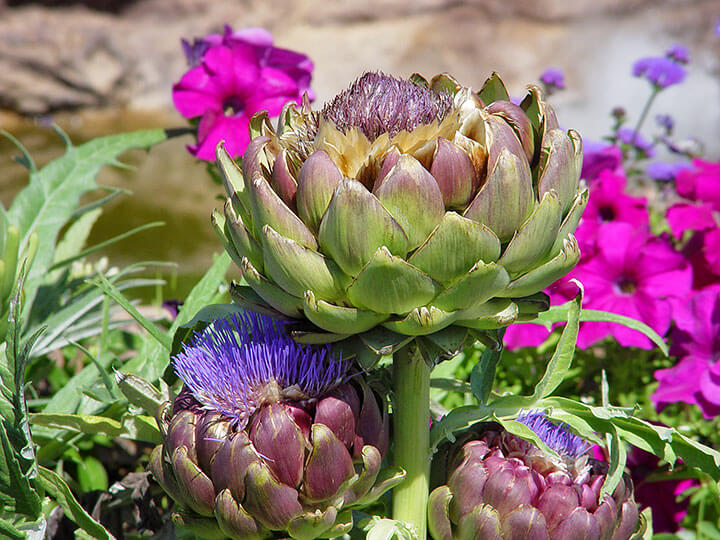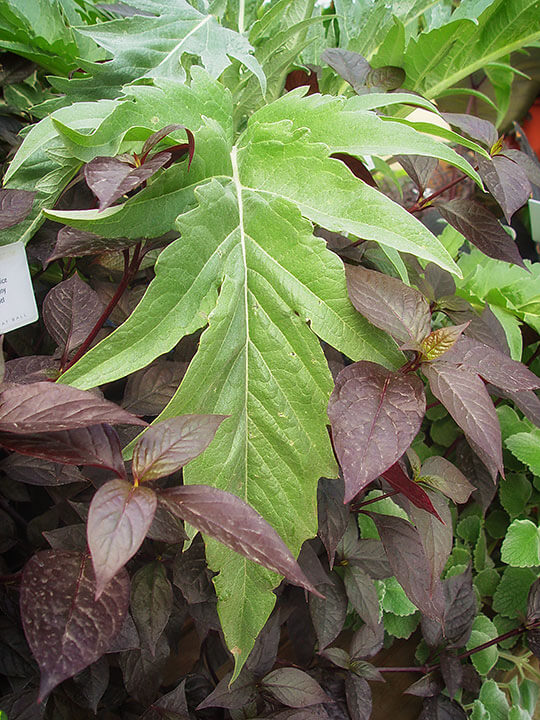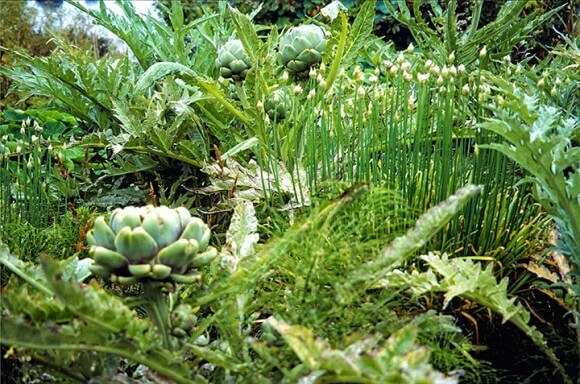What happens when a vegetable wants to be a highbrow perennial flower? There’s no question that the artichoke chose to be both. Grow them this coming year and you’ll discover how these curious plants can lend color, style and healthy cuisine, whether grown in pots or in the ground.

Out west where perennials often suffer in a dry climate, the artichoke, which originates in the arid Mediterranean, has naturalized. In California it has escaped to become invasive along the coast. This plant is far more adaptable than you think, and gardeners cultivate them in almost every state. Those living in USDA Zone 8 or higher consider them fully perennial. Where slightly colder in Zone 7, the roots may survive winter underground if well protected by mulching. In all other zones they should be planted from dormant roots dug the previous fall or newly purchased at the garden center. You’ll find them in organically grown Bonnie Plants displays and in most vegetable seed and plant catalogs.
Artichokes return from the roots every year and may be divided into new plants after a few seasons. They bloom in the summer, and it is these immature flower buds that are harvested to sell in markets. If left on the plant to mature the bud opens up to a huge purple tuft of fibers that are stunning to look at. This makes them a star in beds and borders of Mediterranean style architecture and vintage bungalows, as well as the food garden. Each summer the original roots will grow larger and may in time be divided into many new plants.

Artichokes make outstanding container grown plants because the silvery leaves are so exotic looking and the flower buds, if not harvested, open into an incredibly large thistle-like flower. Grow in rustic terra cotta pots or tall Asian urns for a truly unique composition.
The plants prefer well drained sandy loam and thus do very well with Black Gold All Purpose Potting Soil. In drier regions consider Waterhold Coco Blend Potting Soil to help retain moisture without compromising drainage. Growing in pots allows you to bring the container into warmer conditions for the winter months after the growing season ends.
When growing artichokes in ground, take care to fortify the soil of each planting hole. These plants can be heavy feeders in the first year or two, so be generous with Black Gold Garden Compost when preparing the soil deeply. In later years apply additional fertilizer for flowers to established plants in spring to boost nutrient levels essential to production of large tasty buds in summer.
A happy artichoke plant can mature at four feet wide, so be aware of the spatial demands before you plant them. Then find a sun drenched location, particularly on gently sloping ground to ensure the drainage is perfect. After you’ve eaten the early crop, this food plant goes into ornamental mode. Leave the later buds on the plants to open fully into large purple tufts for late summer color and a second harvest of dried seed heads for arrangements in the fall. Indeed, the artichoke is both food and flower, coming back again each year in a celebration of its most welcome duality.

